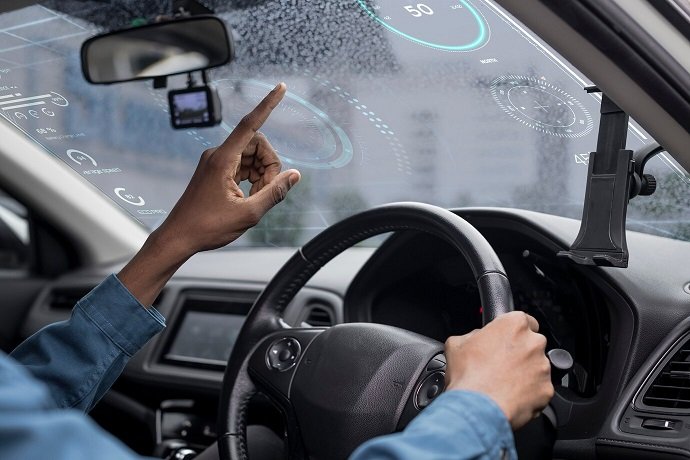“🌐 Dive into the world of telematics with our in-depth guide! 📚 Explore diverse telematic technologies and elevate your knowledge! 📈🚀”
Telematics combines telecommunications and informatics to monitor and control remote objects. It involves the use of GPS and onboard diagnostics to record movements on a computerized map. Its applications include wireless vehicle safety communications, electronic toll collection, and fleet management.
Telematics is an interdisciplinary field that involves long-distance transmission of computerized information. It integrates telecommunications, vehicular technologies, road safety measures, electrical engineering and computer science elements to provide several services such as GPS navigation systems, wireless safety communications and driving assistance systems. Understanding the types of telematics helps individuals and industries gain a broad understanding of this essential technology which ranges from vehicle telematics to smartphone-based integrated dispatch taxi services. Each type has different applications and serves unique purposes in our increasingly connected world.
Telematics, combining telecommunication and informatics, is highly relevant today. It fosters better vehicle monitoring, improves logistics management, enhances road safety by tracking driver behaviour and tirelessly supports insurance sectors through data transmission. Telematics also facilitates smart city development in this dynamic digital age. For more information, you can visit this link:
History and Evolution of Telematics
Telematics originated in the 1960s as telecommunication combined with informatics. Initially applied in military and space research, then gradually utilized for vehicle tracking systems. Now, it’s significantly reshaping industries across different sectors including logistics, insurance and public transportation through real-time data-sharing features.
Telematics has evolved significantly since its inception in the late 20th century. Advances have allowed real-time data transmission that enables fleet management, GPS navigation, and wireless safety communications. The incorporation of IoT technology furthers our understanding of driving habits and general vehicle efficiency.
Understanding advances and development in any field is crucial not just to stay current, but also to gain predictive foresight. It requires continuous learning, flexibility to adapt to changes, and a deep awareness of historical patterns. This influences decision-making processes towards more successful outcomes.
Different Types of Telematics
Vehicle telematics implies the integration of telecommunications and vehicular technology for security, safety, or enhanced driving experience. It encompasses GPS tracking, navigation systems, emergency warning systems and wireless communications like vehicle-to-vehicle (V2V) or vehicle-to-infrastructure (V2I), significantly shaping future smart mobility solutions.
Fleet telematics is a management system that utilizes GPS technology to monitor fleet vehicles. It tracks location, speed, fuel consumption, and vehicle health in real time. This digital tool brings increased efficiency and reduces operating costs in transport-related businesses.
Insurance telematics utilizes GPS technology and onboard diagnostics to record driving behaviours. It aids insurance companies in risk assessment, policy pricing, and claim management. This data-driven approach promotes safe driving behaviour, offering discounts for customers with good driving records as an incentive.
Telecommunication Telematics represents a fusion of telecommunication and informatics, focusing on the transmission of digital data over various networks. It encompasses several fields like vehicular technology, road transport, computer science, and electrical engineering to improve safety and communication efficiency.
Telematics technologies are widely used in various sectors such as automotive, insurance, and logistics. They enable real-time monitoring of vehicles, optimize fleet management, facilitate usage-based insurance models, improve driving behaviour through feedback systems and enhance emergency responses with precise location tracking.
The emergency warning system for vehicles is a significant innovation promoting road safety. It alerts drivers via visual or audio signals about potential hazards, traffic blockages, adverse weather conditions, close proximities or mechanical issues. This technology greatly enhances operational safety and mitigates accident risks.
Fleet management involves managing commercial vehicles efficiently to boost productivity and ensure compliance with regulations. Tracking, a crucial part of fleet management, uses GPS technology to monitor vehicle locations and movements, facilitating optimal routing, fuel consumption control and proactive maintenance scheduling.
Automated driving refers to the use of various control systems in vehicles enabling autonomous or semi-autonomous navigation without human presence. Elements like GPS, radar and artificial intelligence form its backbone, paving a path for improved road safety and traffic management.
Insurance premium knitting is a term used in the auto insurance industry that entails customizing premiums based on driving behaviour. Analysis of real-time data from telematics can determine risky behaviours, such as speeding or harsh braking, thereby dictating personalized insurance costs for drivers.
Enhanced vehicle diagnostics include advanced diagnostic tools capable of detecting real-time issues in a car. They provide comprehensive analysis through OBD systems, enabling shorter troubleshooting times and proactive maintenance. Such improvement enhances vehicle longevity, operational efficiency, and overall driving safety.
Understanding Key Components of Telematics Technologies
GPS technology, short for Global Positioning System, utilizes satellite signals to pinpoint exact geographical locations. It is valuable for navigation and positioning in numerous fields–ranging from personal transportation to the aviation industry. Hence, it’s a driving force behind today’s location-based services.
GPRS technology, or General Packet Radio Service, is a mobile data service used on 2G and 3G cellular communication networks. It’s significant for enabling continuous internet connectivity. GPRS revolutionized mobile communications by providing high-speed transmission of voice and multimedia data.
On-board diagnostics (OBD), a vehicle’s self-diagnostic and reporting capability, enables maintenance personnel to detect problems efficiently. OBD systems monitor various components including engine performance and emission controls. The system triggers alerts when it identifies notable changes or malfunctions in the vehicle.
In-vehicle networks allow internal electronic components of a vehicle to communicate with each other. This includes control systems for automatic driving, safety features, climate control or multimedia devices. They are designed to handle complex operations efficiently enhancing the functionality and reliability of the car.
Future Trends in Telematics
5G technology enhances telematics systems by ensuring faster data transmission, ultra-reliable low-latency communications, and larger bandwidth. This can improve vehicle-to-vehicle communication, enable smarter traffic systems, assist autonomous driving operations and bolster the overall efficiency of transportation and logistics networks.
AI and Machine Learning dramatically shape telematics, enhancing efficiency and precision. They optimize fleet management, accurately predict maintenance issues, promote fuel-efficient driving habits and improve route planning. These technologies also progress safety measures by monitoring driver behaviours and mitigating potential risks proactively.
The potential of IoT in enhancing telematics is substantial. By integrating IoT-enabled devices, valuable data can be captured and analyzed for improved fleet management, predictive maintenance and real-time tracking accuracy. It boosts efficiency, and safety, reduces costs and drives smarter decision-making strategies in telematics.
FAQs
What are examples of telematics?
Telematics examples include GPS systems for navigation, ignition interlocks in vehicles, wireless safety communications between cars or traffic lights, tracking systems for fleet management and vehicle theft prevention. Also included are Internet of Things applications like smart home automation reducing energy consumption.
What is the difference between telematics and black box telematics?
Telematics combines telecommunications and informatics in vehicles. It includes GPS tracking and diagnostics. Black box telematics specifically refers to a device installed in cars, which records information about speed, distance and braking habits, largely used for insurance purposes or accident analysis.
What is the difference between telemetry and telematics?
Telemetry involves the collection of measurements or other data at remote points and their automatic transmission to receiving equipment for monitoring. Telematics, on the other hand, combines both telecommunications and informatics, encompassing solutions like GPS tracking and wireless communications.
What is the difference between telematics and GPS?
Telematics integrates computer systems, telecommunication services and vehicular technologies for applications like vehicle tracking. GPS is a specific telematics technology that uses satellite signals to provide precise locations, navigation assistance, timing services and short message services across the globe.



